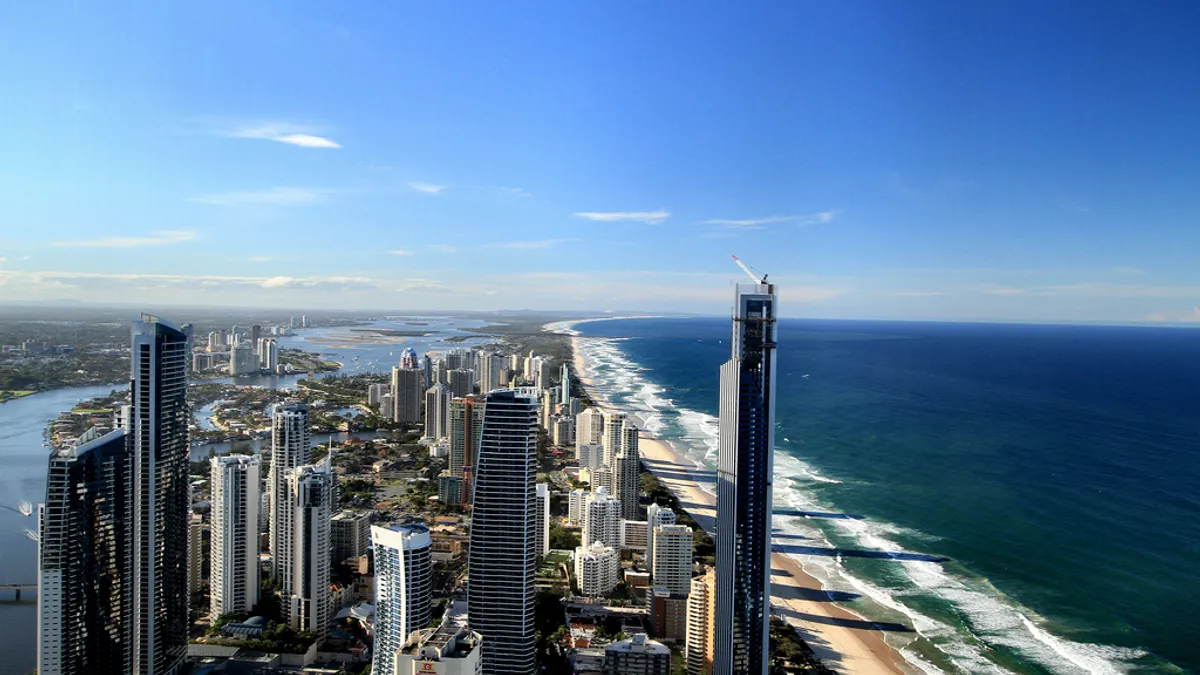Dive Brief:
-
A report by McKinsey and Co presented at the recent Australian Energy Week conference claims that Tesla's 100 MW / 129 MWh battery has now reduced grid service costs by 90%, taking over a 55% share of state's Frequency Control Ancillary Services (FCAS).
-
McKinsey partner Godart van Gendt presented the report, saying the high success of Tesla’s Horsndale Power Reserve Battery Energy Storage System (HPR) makes the business case for a second battery on the same grid "a bit less attractive," according to RenewEconomy.
- The Australian Energy Market Operator (AEMO) praised the Tesla project's grid performance in an April report of the first four months of the system's operation. The country has more large battery projects in the pipeline to help manage the grid and utilize more renewable energy.
Dive Insight:
Owned and operated by the French renewable energy company Neoen, Tesla's HPR is having a huge impact on South Australia's FCAS market, greatly reducing the price of grid service and increasing the electric grid's reliability. The system proved its rapid response capabilities in December, following reports that it stepped in to provide power when units from a coal-burning plant tripped offline twice.
HPR represents only 2% of the power capacity in the state of South Australia and it has already cornered the FCAS market's revenues, according to Van Gendt. Through his assessment, he aimed to illustrate the great impact that new dispatchable technologies can have on the energy market, as South Australia was the only state to see FCAS pricing fall over the past few months.
Other estimates credit HPR for saving consumers around $35 million in costs of ancillary services, to stabilize the grid, according to RenewEconomy.
Tesla is working to create other opportunities to earn grid service revenues in South Australia, by developing a virtual power plant by fitting 50,000 houses with rooftop solar systems and Tesla's Powerwall 2 batteries.
The South Australian market may not be as friendly to a second giant battery storage system, according to Van Gendt. However, British billionaire Sanjeev Gupta's SIMEC ZEN Energy is planning the development of a bigger battery less than 100 miles from Tesla's HBR.
South Australian Premier Jay Weatherill approved an almost $8 million loan from the state government for SIMEC ZEN to develop a 120 MW / 140 MWh energy storage project utilizing solar to support a steel plant in Whyalla.
During this year's Q1 earnings call with analysts, Musk mentioned the possibility of a 1 GW battery. The race for the largest lithium-ion battery system is progressing at a fast clip in Australia, where several large energy storage projects are in the pipeline.
The renewable energy firm Lyon group announced in 2017 plans for a 100 MW / 400 MWh battery storage system at a wind facility in Brisbane. In addition, Queensland's SolarQ is planning to pair a 350 MW solar facility with a battery system of up to 4,000 MWh.















